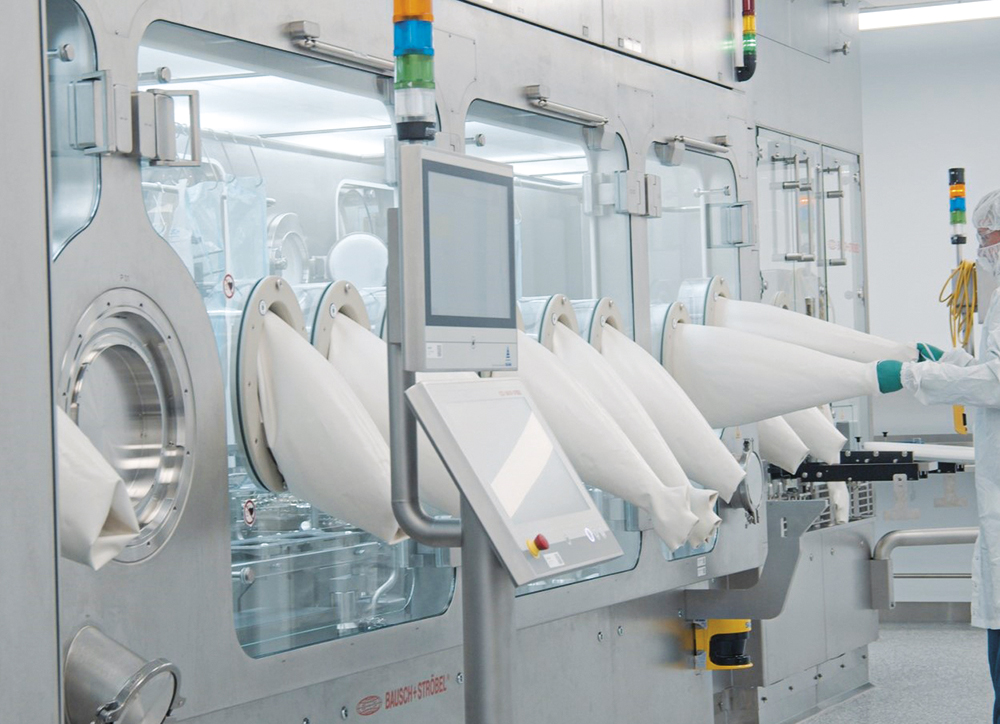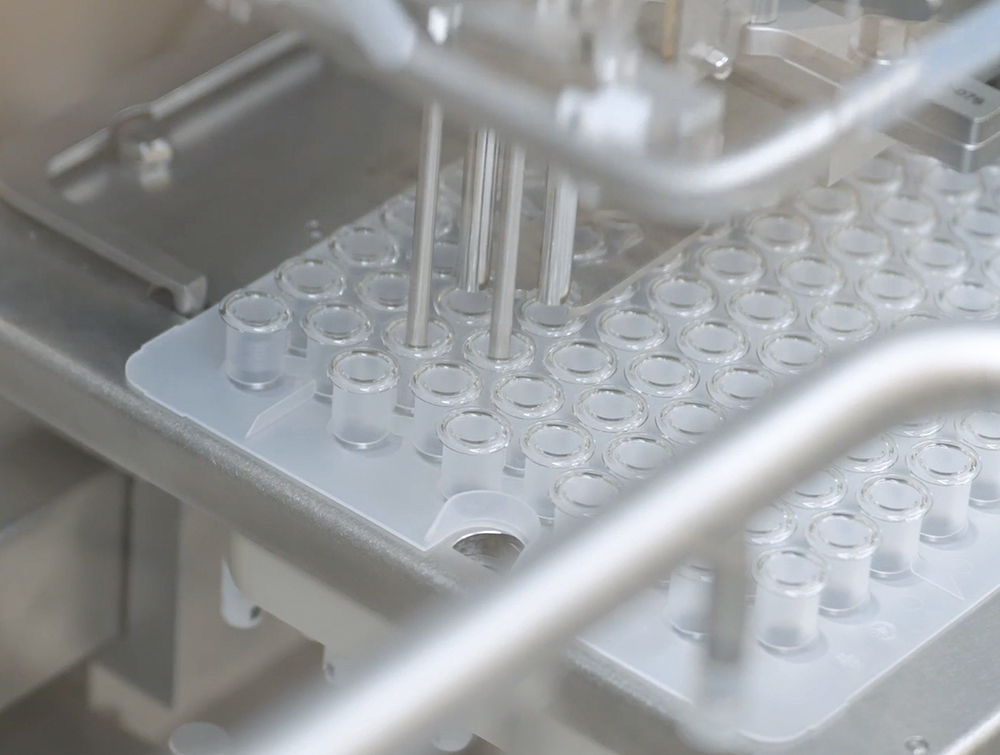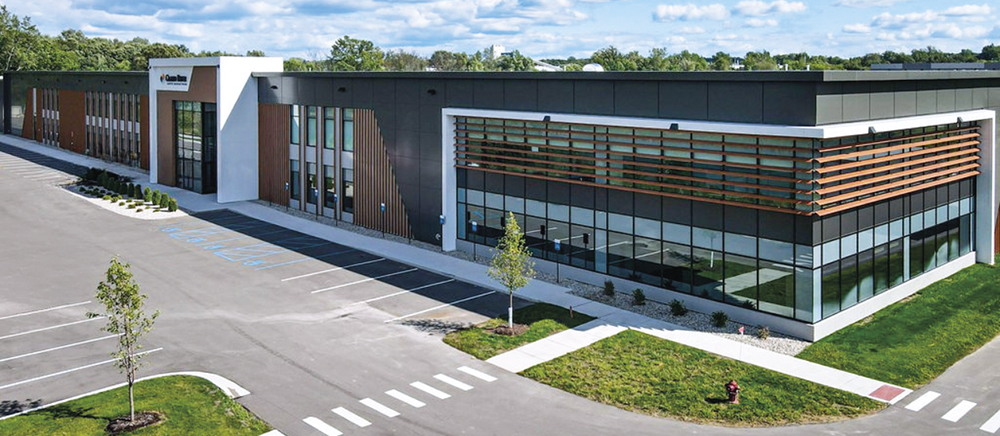Citation: Keeton C, “From Cartridge to Commercialisation – Understanding the Fill-Finish Process”. ONdrugDelivery, Issue 178 (Oct 2025), pp 108–112.
Chelsea Keeton digs into the challenging yet often overlooked process of fill-finish, discussing the particular hurdles and considerations that come with filling drug products into primary containers, with an emphasis on cartridges and their role in an injectables landscape increasingly influenced by the needs of biologics.
Developing and manufacturing a drug delivery device is a notoriously difficult process. From initial design work and prototyping through to full-scale commercial production, there are a plethora of individual aspects that all require specialist expertise and know-how to get right, let alone excel at. And, as time goes on, the process is only becoming more complex, with challenging APIs, such as biologics and monoclonal antibodies, demanding that the industry adapt to handle higher viscosities and fill volumes. Simultaneously, pressure is mounting on drug and device developers to create more patient-centric therapies suitable for self-administration as healthcare moves out of the clinic into patients’ homes.
With such high demands placed on the industry, it is no surprise to see the prevalence of CDMOs and specialist partners on the rise. Gathering together all the necessary expertise to get a drug-device combination product from concept to market all under one roof is becoming less and less feasible. In an industry as rigorously regulated as pharma, specialist CDMOs can offer the deep institutional knowledge required to de-risk development and smooth the journey from early design to commercialised product.
In the injectables space, a critical area of expertise is fill-finish operations. Prefilled syringes, autoinjectors, wearable injectors and other ready-to-use devices are only continuing to gain relevance, driven by an industry-wide push towards at-home self-administration in an effort to alleviate some of the strain on healthcare systems, decrease costs and improve patients’ quality of life. As an expert CDMO in fill-finish processes, Grand River Aseptic Manufacturing (GRAM) is a leading partner for pharma companies looking to navigate this complex and challenging field.
“UNDERSTANDING WHAT IS REQUIRED OF A FILLING LINE AND HOW THE MACHINERY INTERACTS WITH THE DRUG FORMULATION AND PRIMARY CONTAINER IS CRITICAL FOR ENSURING SMOOTH OPERATION AND MINIMISING WASTE – A PARTICULAR CONCERN WHEN DEALING WITH NOVEL BIOLOGICS.”
THE FILL-FINISH PROCESS
Before any new filling line can begin commercial operations, it must undergo and pass a series of rigorous quality checks and validation steps. Experienced CDMOs follow established procedures to ensure that the equipment delivers accurate fill volumes, operates, reliably, maintains sterility, performs consistent in-line inspections and meets regulatory compliance. Understanding what is required of a filling line and how the machinery interacts with the drug formulation and primary container is critical for ensuring smooth operation and minimising waste – a particular concern when dealing with novel biologics.
Regulatory Compliance
A key factor that needs to be considered at this stage is regulation. Fill-finish sites must meet strict requirements set out by various regulations, including the US FDA’s 21 CFR Part 11, EU GMP Annex 1 and ISO 13485. This is particularly relevant when considering sterilisation and cleanroom processes for aseptic filling, which are both subject to stringent standards and require specialist infrastructure that may not be readily available to pharma in-house. Working with a specialist fill-finish CDMO can make meeting these requirements significantly easier, as they can use their in-house expertise and specialist facilities to ensure compliance in an efficient manner from a project’s beginning, de-risking the process.
Sterility
Once a line has been validated and approved, aseptic filling can begin. This is an involved and complex process where a multitude of factors demand attention. First and foremost, it is absolutely vital to prevent any form of contamination entering the formulation, be it particulate or microbial. As such, aseptic filling mandates the use of cleanroom environments in accordance with ISO 14644 regulations.
In some cases, such as with highly potent or complex biologics, traditional cleanrooms may not be sufficient to fulfil this requirement – specialist isolator technology may be needed (Figure 1), which can present a significant up-front cost for companies that have not already made that investment. Additionally, maintaining sterility only becomes more challenging as a filling operation scales up from clinical to commercial scale and batch sizes increase.

Figure 1: Specialist isolator technology may be required when filling highly sensitive biologics.
Automation
Scale-up is challenging in more ways than just sterility concerns, however. At the small-batch level for early clinical trials, it is possible to rely on manual and semi-automatic processes, but this approach becomes increasingly infeasible at commercial scales. Commercial filling requires the inclusion of automation and robotics across filling, stoppering, inspection and labelling. To successfully automate a filling line requires both expertise to design the line and the mechanical know-how to maintain the line and ensure minimal downtime. GRAM specialises in scale-up and is able to seamlessly transition to larger scales as a drug progresses through the development programme, maintaining flexibility in the early phases and smoothly moving to high-volume manufacture for commercialisation.
Formulation Concerns
It can be easy to overlook the nuances of how the physical properties of a formulation can affect the filling parameters. However, these considerations are critical to ensuring that the drug is filled accurately and reliably into each container. For example, the viscosity of a formulation can dictate the height from which it can be dispensed into a cartridge without splashing, which may lead to rejections during visual inspection if uncontrolled. Another factor here is bubble formation – if the machinery is incorrectly set up, it can increase the likelihood of the filled liquid containing bubbles, especially for more viscous formulations. Some formulations, such as many advanced biologics, can also be sensitive to shear forces and oxygen exposure, so these factors may need to be tightly controlled during the filling process as well.
Inspection Systems
A filling line must also be able to catch these defects, meaning that they need to include inspection procedures – preferably multiple. Inspection can be performed manually by trained staff or automatically using in-line detection equipment and specialist software (Figure 2). To be as thorough as possible, inspection can go beyond visual inspection by eye or by camera to include additional processes, such as headspace gas analysis, to ensure that the product is filled exactly as required.

Figure 2: GRAM’s focus on quality ensures that products are inspected by both trained staff and automated in-line inspection systems.
Stoppering, Labelling and Storage
Filling the drug substance into the chosen primary container is just the beginning of the fill-finish process. Once the drug is filled, the container must be stoppered, labelled and packaged, each step presenting its own technical challenges and regulatory requirements. Labelling requires careful attention, as regional regulatory variations must be addressed based on the intended market for each batch.
When setting up the filling line, a decision must be made as to what stoppering process to use. The stoppering process will depend on both the type of primary container, such as vials or cartridges, and the needs of the formulation. For cartridges, the standard method is to mechanically insert the stopper with a rod and a vent tube, which prevents the stopper from backsliding. However, in cases where headspace needs to be minimised or the cartridge needs to be free of oxygen, vacuum stoppering may be more appropriate. During vacuum stoppering, the stopper is placed inside a vacuum chamber connected to the cartridge and then pushed into the cartridge once the correct pressure is reached, causing the stopper to descend right down to the surface level of the filled drug.
Finally, it is important to consider the primary containers themselves throughout the process. If mishandled, glass containers could be scratched or broken, leading to rejections. Then, once filled, stoppered and labelled, the containers need to be stored and transported. It is important to control the conditions that the filled containers are kept in, such as temperature, especially in the case of sensitive biologics.
“IT PAYS TO BRING FILL-FINISH EXPERTS ON BOARD SOONER RATHER THAN LATER TO MAKE THE MOST OF THEIR INSIGHT AND BEGIN PREPARING FOR FILL-FINISH AS EARLY AS POSSIBLE.”
Partnering for Success
Considering these factors at an early stage of product development can lead to significant savings further down the line in terms of both time and cost. Therefore, it pays to bring fill-finish experts on board sooner rather than later to make the most of their insight and begin preparing for fill-finish as early as possible. Doing so creates the opportunity to circumvent future problems by identifying them before they occur and applying fixes pre-emptively, which can significantly reduce costs in the long term.
GRAM is a leading provider of fill-finish services, with established facilities that have access to state-of-the-art equipment and world-class experts in the field, positioning it to be a leading partner for ensuring a smooth and painless fill-finish process (Figure 3).

Figure 3: GRAM’s specialist syringe and cartridge filling centre.
“FILLING CARTRIDGES IS A DIFFERENT BEAST TO FILLING VIALS, WHICH HAVE HISTORICALLY BEEN THE DE FACTO CONTAINER FOR INJECTABLES.”
CONSIDERING CARTRIDGES
A staple primary container format for injectables today is the cartridge, which has become a mainstay of advanced injection devices due to the numerous advantages they offer. However, filling cartridges is a different beast to filling vials, which have historically been the de facto container for injectables. As an expert in fill-finish operations for injectables, GRAM has a wealth of experience and understanding with this format and is able to help its partners through the fill-finish process from clinical trials to commercial scale-up.
For decades, the expectation for injectable drug delivery was that a healthcare professional would administer injections to their patients in a clinical setting using a standard vial and syringe filled at the point of injection. However, the industry has been striving to update this paradigm, first by innovating with prefilled syringes and now with increasingly advanced injection devices, ranging from autoinjectors to wearable devices. The trends driving this shift are manifold, ranging from the drive to shift healthcare from the clinic to the home – requiring devices that are user-friendly enough for laypeople to master – to needing devices that can meet the needs of challenging biologic therapies.
The Advantages of Cartridges
Many of these advanced delivery devices rely on cartridges as their primary container. Cartridges offer unique flexibility to designers compared with vials or syringes as part of an injection device, allowing for both prefilled and user-loaded designs. Cartridges fit easily into a variety of designs and device types compared with other primary containers, due in large part to their more variable form factor, range of volumes and ability to work with custom fluid paths.
Using a cartridge as the basis for a drug delivery device, be it reusable or disposable, provides a baseline assurance of drug sterility compared with requiring the user to fill it from a vial, especially with non-professional users such as patients and carers. Because a cartridge is filled aseptically and directly connected to the fluid path without any need for the user to transfer the liquid, it eliminates the risk of exposing the drug to contaminants during administration.
Beyond these benefits, cartridges are also more efficient than vials, as they eliminate the need for overfilling. To ensure that the listed number of doses can be delivered, vials are typically filled with an excess of drug so that there is no risk of being left with a partial final dose. Cartridges, on the other hand, dispense drug by depressing a plunger like a syringe, so this need is entirely obviated, which can lead to cost savings for expensive biologics. Furthermore, this delivery method allows for precise dosing, unlocking further potential for device designers.
The Challenges for Cartridge Fill-Finish
With these advantages in mind, it is no wonder that device designers are increasingly using cartridges. However, this shift presents challenges to fill-finish providers. There are long established procedures for traditional primary container formats such as vials and 1 mL syringes. Conversely, no such standards exist for larger-volume cartridges – and with devices such as wearable injectors pushing up to 3, 5 and even 10 mL fill volumes, there is a distinct lack of pre-existing infrastructure available.
The increasing use of novel container formats requires fill-finish specialists such as GRAM to adapt with precision and agility. Manufacturing lines must be specifically designed and qualified to accommodate non-standard cartridges with variable fill volumes, while maintaining full compliance with stringent regulatory requirements such as EU GMP Annex 1.
Furthermore, as these programmes progress through the development journey, their fill-finish partners must remain flexible to meet the evolving needs of the novel formulations and devices. This flexibility must be maintained while also planning for eventual scale-up and commercialisation, all of which must be done at a rapid pace as the industry pushes forwards to meet the demands of the moment. Needless to say, this is not a task to be taken lightly – it will require rich expertise and experience to surmount.
EXPERTISE MAKES EVERYTHING EASIER
Fill-finish is both critical and non-trivial – a specialist discipline with its own regulatory demands, challenges and best practices. However, in today’s drug delivery landscape, there is no need to try to tackle it alone. Partnering with an expert CDMO with a proven track record, such as GRAM, can make understanding and navigating the world of fill-finish significantly easier. What could be a challenging and risky road if travelled alone can be made so much simpler by relying on the proven experience of an expert partner in the field.
GRAM prides itself on developing deep and rich partnerships with its collaborators, based on open and frank communication. This transparent approach leads to lower risk and better outcomes, smoothing the development journey from early small-scale production through to full commercial manufacture. GRAM not only has the essential infrastructure already established at its facilities in Grand Rapids (MI, US), but also the institutional knowledge and experience to adapt to the specific needs of a given drug and device. Working together with GRAM, fill-finish can be demystified and scale-up made seamless.

